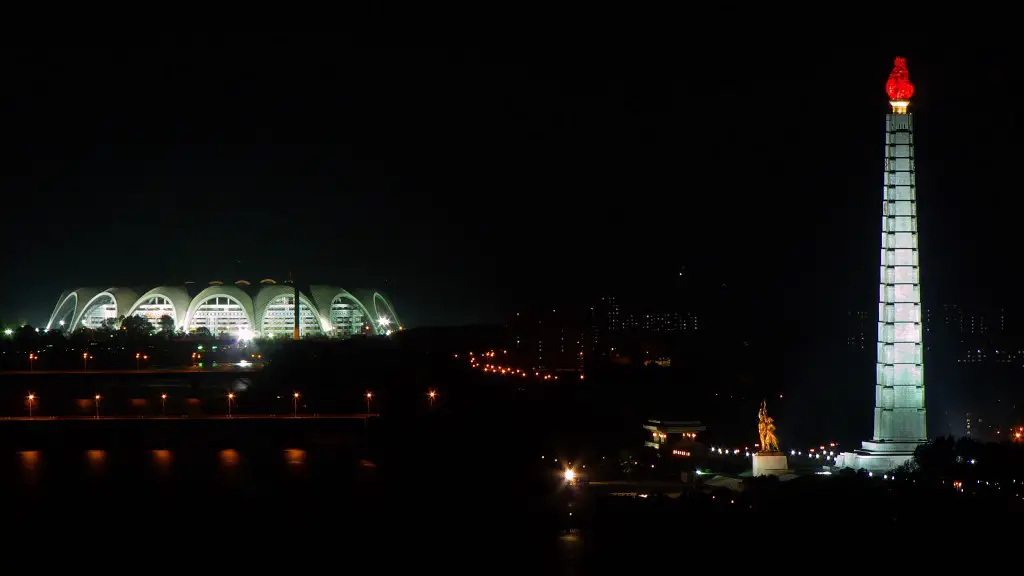With increasing nuclear testing from North Korea, many countries, particularly Australia, are left wondering if their nation will be in the firing line of a long-range missile. This article aims to answer the question “Can North Korea Missiles Reach Australia?”, looking at the current capabilities of the North Korean missile arsenal, the history of the development of their weapons and their potential reach in comparison to Australia’s defences.
North Korea has been active in its development and testing of potentially nuclear-capable missiles since the late 1980s when they first tested the Soviet-made Scud missiles. The range of demands, however, increased dramatically with the introduction of the Taepodong-2 missile tests in 2006 shows that North Korea has made huge strides in missile technology since then. These Taepodong-2 missiles are believed to have an estimated range of over 7,400 km and could potentially reach as far as the Northern Territory and Western Australia.
Despite this, North Korea is not known to possess missiles that are capable of reaching the mainland of Australia. In fact, the only missiles that have been tested by North Korea and are believed to have enough range to reach Australia are the Hwasong-14 and the Hwasong-15 ICBMs. These missiles have an estimated range of over 12,000km, however, it is not known if these can be successfully launched and reach the mainland of Australia.
One of the main reasons why North Korea is not thought to have missiles that can reach Australia is the reliance on the Taepodong-2 intermediate-range ballistic missile. This missile is capable of carrying a significantly smaller payload than the ICBMs and therefore cannot reach Australia with the same effectiveness. The North Korean ballistic missile arsenal also lacks the accuracy of some other countries, notably the United States, who are capable of targeting specific areas of Australia with precision.
In terms of Australia’s defence capabilities, the nation deploys a range of systems designed to detect and intercept missiles targeting the country. These include the US Navy Aegis system in the Coral Sea, the Jindalee over the horizon radar system, and a range of integrated air defence systems used by the Royal Australian Air Force. In combination, these systems are aimed to greatly reduce the risk of an incoming missile from North Korea successfully reaching the Australian mainland.
In terms of the Governments response, the Australian Prime Minister Malcolm Turnbull has recently stated in a press conference that Australia was “ready and prepared to defend [itself] against any missile or weapon attacks from North Korea”. While this confident language is reassuring to many Australians, it is still unclear as to the actual effectiveness of Australia’s various defence systems against a North Korean missile.
Overall, the chances of a North Korean missile successfully reaching Australia is considered to be remote due to a lack of ICBMs and the accuracy of Australia’s defence networks. There remains unrest and uncertainty in the region, with the North Korean missile program continuing to cause worry in both South Korea and its allies.
Range of North Korean Missiles
North Korea currently has 6 different types of missile in its arsenal, each with different ranges and payload capabilities. The Scud-B missile, the oldest of the North Korean missiles, has an estimated range of 300-500km, while the most recent Hwasong-15 ICBM is said to have a range of 12,000km. In between these missiles, the also develops and tests the Rodong-1, Taepodong-1 and 2, and the Hwasong-14.
The short range Scud-B missile is the most frequently tested missile by North Korea, however, it is largely considered to be a weapon for use against short-term military targets in neighbouring countries such as South Korea. The Rodong-1 is believed to be an improved and extended-range version of the Scud-B and is estimated to have a range of between 800-1,000km.
The Taepodong-1 was the first major step forward in the North Korean missile program and is estimated to have a range of around 3,000km. This paves the way for the Taepodong-2 which has an estimated range of 7,400km and is believed to have been tested for nuclear payloads.
The Hwasong-14 and 15 ICBMs are the most powerful missiles in North Korea’s arsenal and have a range estimated to be over 12,000km. These missiles are thought to be the only missiles capable of reaching Australia’s mainland, however, the accuracy of these weapons is said to be considerably lower than some of the western nations who have tested similar types of missile.
Readiness of North Korea
In terms of North Korea’s current readiness to launch missiles at a target, it is unlikely that they have the capability to launch a successful attack against Australia. North Korea continues to test their missile technology capabilities and range, but they are not believed to have the same level of accuracy as some of the other nations who have developed similar weapons.
For a successful missile launch, not only is the payload important, but also the targeting and accuracy of the missile. North Korea does not have the same level of accuracy as the United States who have a range of long-range missiles that can be precisely targeted at certain locations. Additionally, North Korea appears to lack the resources that the United States have in order to fully develop their weapon systems.
Therefore, it is unlikely that North Korea has the capability to launch a successful missile launch against Australia as of yet. However, there is still the concern that North Korea may be able to further develop their missile technology in the future and then launch a successful attack against Australians.
Missile Defence Systems
In order to counteract any potential missile launches from North Korea, Australia has deployed a range of defence systems in the past few years. These systems are designed to detect and intercept any incoming missiles before they reach the mainland of Australia.
The most prominent of these defence systems is the US Navy Aegis system located in the Coral Sea. This system uses radars to detect any missiles and is capable of intercepting missiles up to 200 nautical miles away from the shore. Additionally, the Royal Australian Air Force deploys integrated air defence systems to provide an additional layer of protection from incoming missiles.
The Australian Government has also made investments in over the horizon radar systems such as the Jindalee Operational Radar Network. This network of radars has been designed to detect and monitor activity in the airspace of Northern Australia and is capable of detecting and classifying objects from up to 2,000km away.
Overall, Australia has invested heavily in defence systems designed to counteract any potential missile launches from North Korea, however, there remain question marks over the accuracy and effectiveness of the systems.
Governments Response
In terms of the Government’s response, Prime Minister Malcolm Turnbull has consistently maintained that Australia was “ready and prepared to defend itself” against any North Korean missile attacks. Despite this, in recent years Australia has invested heavily in defence systems that can provide an additional layer of protection against potential missile launches.
The Australian Government’s approach has largely been one of caution and containment and the various defence systems that have been developed in the past few years have been aimed to minimize the risk of a successful missile launch from North Korea reaching the mainland of Australia.
The Government has also been working with the United Nations and their allies to further downgrade and control the development of the North Korean nuclear program. This has included a range of economic sanctions that have been placed on North Korea in an attempt to reduce the capability of their weapons.
In terms of Australian citizens, the Government has advised that people should “remain vigilant and aware” of the situation and that they should “report any suspicious activity to the local police”. Ultimately, the Government has sought to minimize the risk of a successful missile launch from North Korea reaching the mainland of Australia while also seeking to maintain a level of readiness in case of any potential attack.
International Relations
In terms of international relations, North Korea has been seen as a pariah state for many years, largely due to its pursuit of nuclear weapons and its continued testing of missiles. This has led to a heightened sense of tension with South Korea, who have been involved in a number of violent clashes with the North in the past decade.
This heightened tension has also caused alarm in other nations such as the United States and Australia, who have seen their allies come under increased pressure from North Korea. As a result, many countries have sought to drastically reduce the influence of North Korea in the international community and to further downgrade their weapons capability.
In response, North Korea has been largely defiant, continuing to develop and test its weapons and often responding with aggressive rhetoric and threats towards its enemies. This has led to an increasingly unstable situation in the region and has caused many of North Korea’s neighbours to invest heavily in defence systems in an effort to defend themselves against a potential attack.
Overall, the situation with North Korea is still very uncertain and is likely to remain so in the near future. Much of the uncertainty is due to the lack of communication between North Korea and other nations and the ongoing development of their weapons program. Until the situation becomes clearer, many nations, including Australia, will have to remain vigilant and ready to defend themselves against any potential aggression from North Korea.





